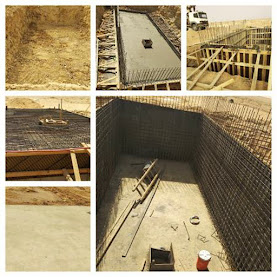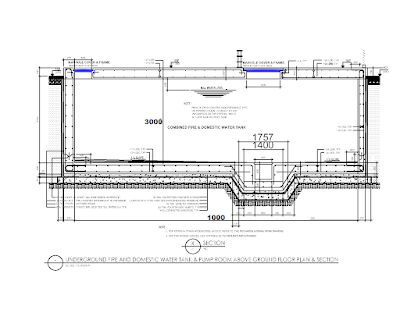How to calculate the Quantity of water in a Rectangular tank?
Introduction
Storage tanks are constructed for storing water, liquid petroleum, petroleum products & merchandise and similar & comparable liquids.
Designed as crack free structures to eliminate any leakage.
Permeability of concrete is directly proportional to water cement ratio.
Cement content ranging from 330 Kg/m3 to 530 Kg/m3 is recommended in order to keep shrinkage low.
We will be determining the capacity of the Rectangular Water Tank by an example.
For other estimating costing articles, click here
How to calculate the Quantity of water in a Rectangular tank?
These are engineering drawings of a simple water tank. It is just a Rectangular water tank and remember the process in this method can be the same for all types of water tank; it does not matter if it's overhead water tank or underground water tank.
Remember
the capacity of the tank can be calculated in terms of volume (meters) and if we
multiply the volume with 1000, we can get the capacity of the tank in liters.
Now area of the base can be taken as area which is covered by the water mass and the depth is the same which is given in the drawing.
So, volume of tank
= L * B * H
(For rectangular tanks)
So, volume of tank
= ⊼ x d²/4 *depth
(For circular Tanks)
As per
drawing, the tank is rectangular, so formula used will be
So, volume of tank
= L * B * H
Here,
Depth of tank = 3000 mm as per above drawing
Length of tank = 10000 mm as per above drawing
Breadth of tank = 4000
mm as per above drawing
∴
Tank’s volume
= 10000 x 4000 x 3000
mm3
= 120000000000 mm3
In cubic meter = 120 m3
|
As
in 1 m = 1000 mm |
Also, we know that the water is measured in liters not in cubic meter.
|
In 1 Cubic Meter = 1000 liters |
∴
Tank’s volume = 120 * 1000
= 1, 20,000
liters
In case f gallon,
|
Gallon (gal) |
Liter
(L) |
|
1 |
3.78541 |
∴ ,
Volume of Tank (Gallon)
= 120000 / 3.78541
= 31700.66 gal
Read Also





.jpg)
2 Comments
Too much information
ReplyDeleteThanks 👍👍👍 a lot
Keep sharing valuable information
Jazakallah khair
ReplyDelete